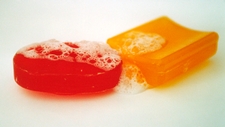Safe Practices and Equipment

TEKS Objective
The student is expected to identify and demonstrate safe practices as described in the Texas Safety Standards during classroom and outdoor investigations, including wearing safety goggles, washing hands, and using materials appropriately.
Essential Understanding
The student conducts classroom and outdoor investigations following home and school safety procedures.
Science Background
Science Safety in Elementary Schools: BioEd Online (video) – This video covers safety fundamentals that promote a risk-free environment for students’ science investigations, including tips for safe classroom practices, safety equipment, and strategies for setting up a safety object wall.
Science Safety in Elementary Schools
BioEd Online, www.bioedonline.org
Managing a Science Lab: McGraw-Hill Teaching Today (website) – Several guidelines to make safety a priority in the science lab are listed with suggestions on how to organize a lab, how to teach lab safety, establish and enforce rules and evaluate the lab environment.
Managing a Science Lab
McGraw-Hill Teaching Today, teachingtoday.glencoe.com
Science and Safety - It’s Elementary! Council of State Science Supervisors (PDF) - A handy and concise reference that elementary teachers of science, primarily at the K-5 level, can refer to for information and resources on commonly asked questions about science teaching and safety. The document is intended to provide basic guidelines for safe practices and facilities.
Science and Safety - It’s Elementary!
Council of State Science Supervisors, www.csss-science.org
Signature Lesson
Science Safety is Elementary: Ohio Department of Education (PDF) – The purpose of this lesson is to initiate discussion about science safety and to identify and apply basic science safety procedures. Children will decide which of their five senses would need to be protected in different situations (personal safety) and identify precautions necessary to avoid hazards in the classroom (classroom safety).
Science Safety is Elementary
Ohio Department of Education, ims.ode.state.oh.us
- Supporting Lessons
- Extensions
- Assessment Ideas
- Literature Connections
- Related
TEKS - Additional Resources
Supporting Lessons
Clean Gene’s Germ-fighters Hit Parade: Gojo Industries (PDF) – Students learn to wash their hands thoroughly to clean them of germs as they write a song about fighting the spread of germs.
Clean Gene’s Germ-fighters Hit Parade
Gojo Industries, www.gojo.com
Elaboration Lessons and Extensions
Fire Safety: Teachers.net (website) – Students practice and learn about fire safety in the classroom and their homes.
Assessment Ideas
Students can create safety comics to demonstrate their understanding of the safety rules.
Literature Connections
Healthy Me: Fun Ways to Develop Good Health and Safety Habits. O’Brien-Palmer, Michelle ISBN-13: 978-1556523595
First Aid for You. Weber, Rebecca. ISBN-13: 978-0756509262
Safety. Gogerly, Liz. ISBN-13: 978-0778741206
Additional Resources
Student Lab Safety Worksheet: McGraw Hill (DOC) – Download a safety worksheet to guide student thinking about safety concerns before conducting an investigation.
Student Lab Safety Worksheet
McGraw Hill, highered.mheducation.com
Lab Safety: Educational Rap (website) – Use a safety rap to reinforce safe practices in the science lab. An audio version of the rap is available for download for a small fee but the lyrics are available for free.
TEKS Navigation
Grade 3
Need Assistance?
If you need help or have a question please use the links below to help resolve your problem.

Comments